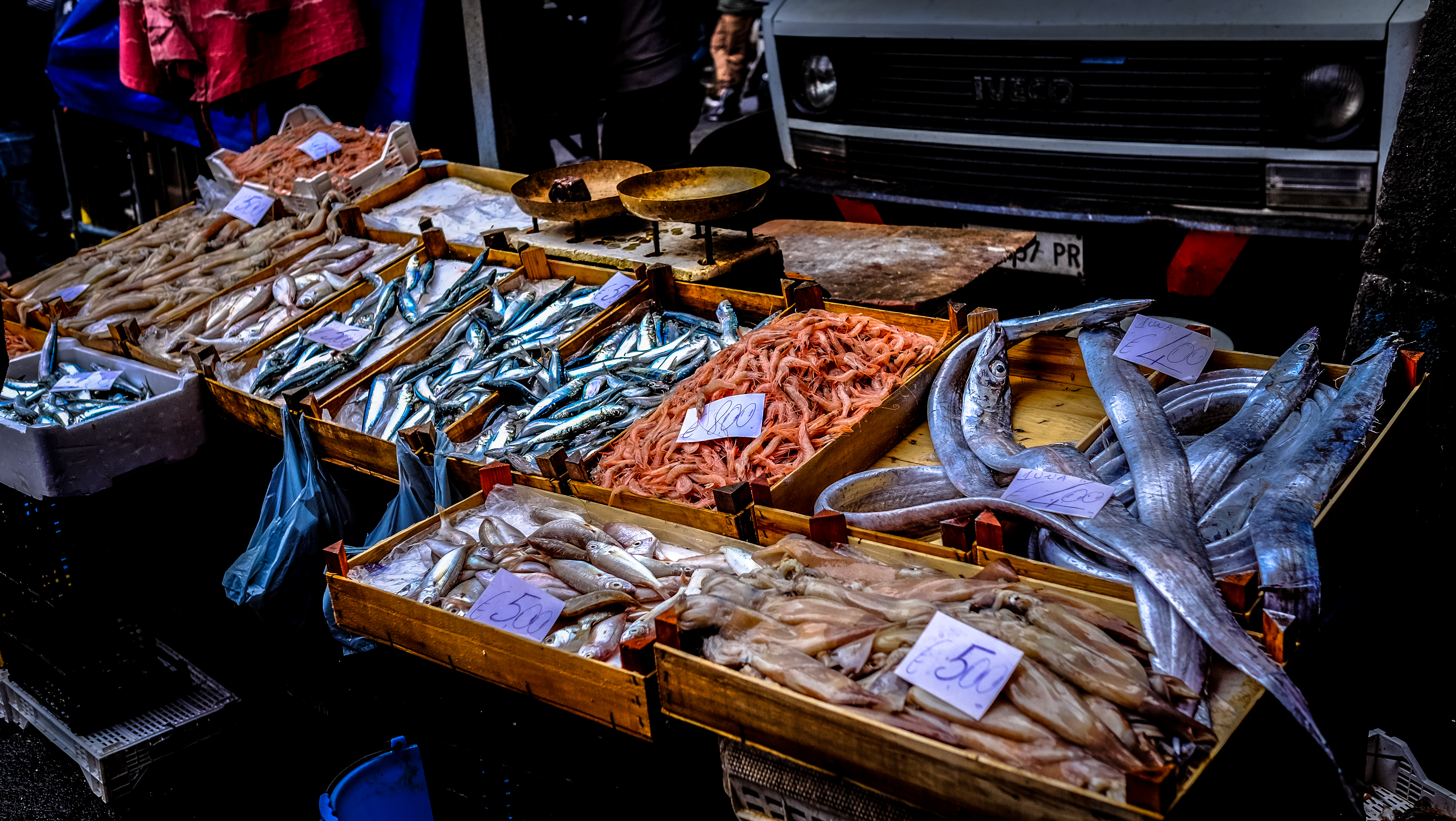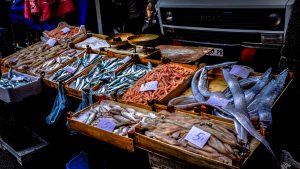
Seafood-1503753037

Ecuador is known for its fabulous exotic fruits, high quality fish and seafood, and the countless varieties of Andean potatoes. Across the country you’ll find a broad spectrum of national and regional dishes, including lemon-marinated shrimp, toasted corn, and pastries stuffed with spiced meats. If you’re feeling courageous, you can put your culinary bravery to the test with roasted cuy (guinea pig) or tronquito (bull penis soup).
For those on a budget, the best way to stretch your sucres is to take advantage of set plate meals, an Ecuadorian institution in many restaurants. Lunches (almuerzos) and dinners (meriendas) usually give you a soup, main course (including meat), and dessert for around USD 1.00. Vegetarian versions are often available upon request.
At only pennies per bite, bakeries offer a delicious range of breads, sweet pastries, and savory snacks, such as empanadas (hot, crispy meat or cheese-filled pastries) and llapingachos (potato and cheese pancakes). Dishes sold in the street are also quite cheap, but hygiene is often questionable, and you may quickly surpass your intestinal limits. A good rule to follow is the “locals rule” — if the place is frequented by many locals, the food probably merits joining the crowd.
The regular diet of rice, potatoes, and meat (beef and chicken everywhere, pork in the Sierra) is complimented by another national culinary institution, aji (hot sauce). Most Ecuadorian restaurants and homes have their own version of aji, each with its own intensity of “picante” (a word derived from the verb to bite or to sting), so sample a bit before smothering your food! If you don’t see a little bowl of aji on your table, just ask theyve surely got it. In addition to aji, basic dishes are usually accompanied by the proverbial rice, small salad, and potatoes or patacones (squashed, fried green bananas). On the coast and in the Amazon, potatoes are often supplemented or replaced by menestra (beans or lentils) or yuca.
Soups are without doubt Ecuador’s specialty. Most lunches and dinners are accompanied by a savory soup as the first course. Locro soup, made with cheese, avocado and potato, sounds a bit odd, but is actually quite tasty. Chupe de pescado, a fish and vegetable soup with coastal origins, is becoming popular throughout the country. Bolder diners can try yaguarlocro, a potato soup made with sprinkings of blood. Those ready to throw their inhibitions completely to the wind should dip their spoon into caldo de pata, a broth containing chunks of boiled cow hooves, considered a delicacy by locals and believed by hopeful men to increase virility.
Other dishes found in your everyday restaurant or home include: seco de pollo (stewed chicken accompanied by rice and avocado slices); lomo salteado (thin beef steak covered with onions and tomatoes); and seco de chivo (goat stew served with a mound of rice. Tortillas de maiz (thin corn pancakes) and choclo (barbecued Andean corn) are sold by street vendors and make great snacks any time of day.
If after your share of bull penis soup you find yourself hankering for a familiar brand burger, burrito, or pizza, don’t panic — the major cities feature (for better or worse) the omnipresent American fast food chains, such as Pizza Hut, Taco Bell, and Burger King. And yes, that most multi of multinationals has finally arrived in Ecuador — the Golden Arches first appeared on Quito’s horizon last October, and the line for a Big Mac still extends out the door.
If you’re the cook, street markets and stalls in major towns sell a good array of fruit and vegetables. You can also pick up exotic spices, as well as fresh picked herbs to make sauces, infusions, or remedies.
In need of some pre-packaged food? Supermarket chains in the big cities have enough variety to keep the average chef happy. If you’re dreaming of English blue cheese or German sausage, there are a handful of specialty stores and delis, particularly in the smarter districts of Quito, which will comfort those tastebuds that don’t realize just how far you are from home.
Seafood
Seafood is popular and plentiful throughout Ecuador. Lobster dinners can be enjoyed along the coast and in major cities for very low prices. In Esmeraldas province on the northern coast, your tastebuds will happily discover a new culinary twist with “encocados,” seafood dishes prepared in coconut milk.
The signature dish of the country, however, is ceviche, a seafood dish marinated in lemon and onions — Ecuador’s answer to sushi. Unlike sushi however, Ecuadorian ceviche is always dished up with popcorn! Ceviche can be made of fish (de pescado), shrimp (de camarones), shellfish (de concha), squid (de calamari), or all of the above (mixta). Exercise caution, however, as improperly prepared ceviche –especially de concha– has become one of the primary vectors for cholera and other nasty bacteria. Most restaurants are aware of this and act accordingly, but choose your dining establishment wisely.
Vegetarian
Vegetarians will be pleasantly surprised by the wide selection of vegetarian options in Quito, Otavalo, and Baos. Don’t expect too many menu options outside of these three cities, however. You will often find yourself ordering “pollo sin pollo” — the chicken plate without the chicken. You may get a few raised eyebrows, but at least your meal will be meat-free.
International Cuisine
As an up-and-coming cosmopolitan city, Quito also offers a good selection of international cuisine. If you fancy Argentinean steak, Italian pasta, Japanese sushi, or French fondue, you won’t be disappointed. Expect prices substansially lower than those in the United States or Europe. Chinese, Mexican, Cuban, Arabic, Indian, and vegetarian meals are available in Quito at reasonable prices. Outside of Quito and Guayaquil, only Baos offers a good mixture of international cuisine.
Vocabulary of food preparation:
- Aperture: ƒ/2.8
- Camera: X-T1
- Focal length: 23mm
- ISO: 320
- Shutter speed: 1/2000s
